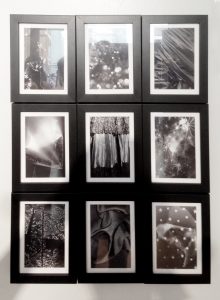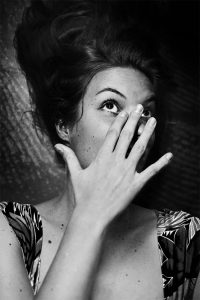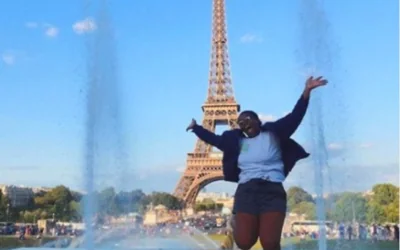Q&A with Lila Neutre
API recently interviewed faculty from the renowned Parsons The New School for Design in Paris to learn why Paris and Parsons are the epitome of design and fashion. We begin our series with Lila Neutre, a photography instructor at Parsons Paris. You can learn more about our program offerings with Parsons Paris here: https://www.apistudyabroad.com/programs/france/paris/parsons-paris-art-and-design-college-summer/
Tell us about your history with Parsons, and your teaching background in general?
I am a French artist primarily active in the field of photography. I have been living in Paris for two years, but I originally come from southern France. I graduated from École Nationale Supérieure de la Photographie and am currently ending an artistic creation PhD examining the concepts of identity and self-expression in post-modern societies in both sociology & photography. If my visual vocabulary refers to fashion photography and pop culture, my work also focuses on political themes such as sexuality and gender and aims at addressing various social, cultural and political issues.
This is my first-semester teaching at Parsons, even though I was in charge of the Photography in Paris program last summer.
Who is the Fashion Photography course for? What kind of student should consider it?
Fashion Photography: Theory and practice is open to all students interested in the vast field of images (from archives to contemporary art practices, commissioned works in and out fashion) and their relationship with semiotics and cultural studies. In our contemporary societies, super aesthetic and spectacular, appearance is social but equally a screen onto which we can project a workable sense of identity. More than a simple choice of clothing, style can sometimes express an entire lifestyle. By studying sign processes, signification, and communication, this course aims at understanding the layered meanings of photography within the extended domain of appearances. Style can become political as images are loquacious.
If technical skills are essential tools to reach creative freedom, this class is not only dedicated to students who already have good knowledge in photography. Fashion Photography: Theory and practice is not about turning students into professional fashion photographers, but more about helping them to develop their creativity and personal approaches to 2D images.

Pict 02: Open studio view, Emanations series (analog rayograms and close-up shots from Balenciaga: L’oeuvre au noir exhibition).
This course caters to a range of skill levels and ages… how has that dynamic worked?
By focusing on techniques and image reviews, we started with the foundations of photography. From exposure to composition and editing, we went through all technical aspects. Students who were quite familiar with the photography bases helped the others and shared their experiences.
The interesting thing about photography is that it is a very subjective matter. Every student, from the most experimented to the most naive, has something to say about it. Sharing visions and aesthetics, comments and observations are crucial.
Fashion design and photography are to be considered as talks between cultures. Differences of age, backgrounds and skill levels make that class even more interesting. It allows us to examine and question the conditions of appearance in the context of various visual cultures. It also challenges the binaries we continually construct between Self and Other. By emphasizing their differences, students can analyze their personal vision and identify areas for growth.
What do you find students are more interested by – the theoretical/historical perspective the course presents, or the hands-on aspects? What most interests YOU?
I wish students were a little more interested in the historical side of things. It can seem a little boring at first glance, but theoretical knowledge gives some crucial clues to understand the world surrounding us. Even the most contemporary practice has its history and refers (consciously or not) to something older. Visual seductiveness can leave you a bit disappointed if the storytelling behind it is poor… This is not to say we all should be photography historian or conceptual artists, but practice and theory is definitely an inseparable couple.
This is the reason why we went through the work of inspirational photographers, past and present, in and out fashion. While looking carefully at their pictures, students understood how to build a powerful image as well as articulate concept and narrative. I believe exploring the various facets of photography through history and theory help mastering the necessary skills to develop a personal style.
What is the biggest lesson or takeaway students get from this course? How does it help prepare them for their current/future degrees?
Creativity starts at rock bottom and making mistakes help us grow. Failure is a good path to create exciting photographs and design pieces. Working in a safe zone can be boring and we all should go for exciting risks and have the courage to fail.
Another important point to understand is that good photographers don’t have a knack for being in the right place at the right time, but constantly are on the hunt for good images. This class aims at sharpening students’ eyes and I like to believe that they learn to look at the world differently.
Finally, I hope this class is giving students some critical tools to question our credulity in front of photographs. We should all play with assumptions and think twice because images are meant to be challenged and questioned. Now more than ever.
What advice would you give to a student considering a summer study program at Parsons Paris?
I would advise them to bring everything they care about; Paris is so enchanting that they might never leave…
What is it about Paris that you are most excited to share with first-time visitors?
Everything that could possibly challenge the French clichés!







